| July 18, 2023 | Volume 19 Issue 27 |
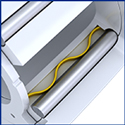 | Top Tech Tip: Innovative way to take up tolerances!
Smalley Linear Springs are a continuous wave formed (marcelled) wire length produced from spring tempered materials. They act as a load-bearing device with approximately the same load/deflection characteristics as a wave spring. Linear Springs are now available as a standard part in carbon and stainless steel, with over 200 sizes.
Learn more. |
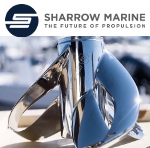 | Toroidal propeller: More speed, fuel savings claimed
Is a toroidal propeller the next big thing in boating? Sharrow Marine, creator of the Sharrow Propeller, thinks so. Four years of independent and factory testing have proven this design bests standard blade technology by providing: significant speed increase at mid-range RPMs, up to 30% greater fuel efficiency, less vibration, dramatic noise reduction, more reverse thrust, superior handling in tight turns at high speeds, and more. The Sharrow Propeller has won numerous innovation awards from both boat shows and highly respected marine publications.
Learn all about the development of this very cool technology. |
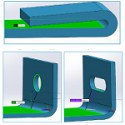 | Top Resource: Sheet metal design guide
If you're looking for a basic guide to sheet metal design, this one from Xometry will serve your needs well. Follow the design requirements and tolerances in this guide to ensure parts fall closer to design intent. This is the type of information you'll sock away and then refer to again and again.
Read the full article. |
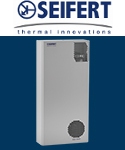 | Top Product: Slimmest enclosure AC on the market!
Seifert's SlimLine Series of enclosure air conditioners integrates unique technologies -- maximum power-to-size ratio, mounting of merely 4.5 in. inside-cabinet depth -- making this line the slimmest air conditioner in the market. It features Seifert's proprietary condenser design that provides improved cooling performance and ensures reliability in demanding applications. Cooling capacity: 1,090 to 5,120 Btu/hr.
Learn more. |
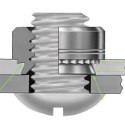 | Top Resource: Self-clinching fasteners tips
Dozens of types and thousands of variations of self-clinching fasteners (steel, stainless steel, or aluminum) have been engineered over the years. Leon M. Attarian of PennEngineering provides three mini case studies where manufacturers benefited greatly by switching to self-clinching fasteners in their assemblies. This article is filled with insightful tips and suggestions.
Read the full article. |
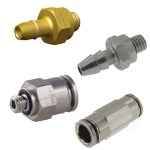 | Top Tech Tip: What they didn't teach you about fittings in engineering school
Do you know why an old standard "Christmas-tree" barbed fitting may not be your best choice for your miniature fluid power application? Experts at Beswick Engineering run through the common types of fittings used in these smaller pneumatic applications, along with thread sizes and seals to help you make the correct choice. They also touch on pressure and temp ranges, chemical compatibility issues, rigid and flexible lines, and the ease of assembly and maintenance.
Read the full article. |
| | Most popular last issue |
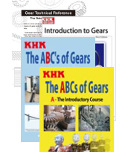 | Great Resources: ABCs of gears and more
KHK USA takes you on a journey through the history and applications of gears in two information-packed, no-cost volumes called "The ABCs of Gears." Part A is aimed at beginners, while part B moves on to intermediate fare, such as types of gears and tooth forms, heat treatment, surface treatment, production methods, etc. Another mid-level text called "Introduction to Gears" and an in-depth "Gear Technical Reference" are also available.
Learn more. |
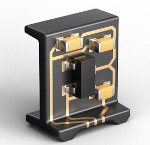 | What is 3D-MID? Molded parts with integrated electronics from HARTING
3D-MID (three-dimensional mechatronic integrated devices) technology combines electronic and mechanical functionalities into a single 3D component. It gives engineers the power and freedom to shrink components, optimize space, and provide higher overall functional density -- while offering the same or more capabilities as in larger devices. HARTING's tagline for the tech is, "Like a PCB, but 3D."
Read the full article. |
|
| | Videos+: Technologies and inspiration in action | Everything you need to know: Electric vehicle tires
What happens if you put a "regular" car tire on an electric vehicle (EV)? Engineering Explained's Jason Fenske covers that and more when he gets deep into why EV tires are different than internal combustion engine (ICE) car tires due to weight, efficiency, noise, and torque demands and other characteristics. You always learn something from a Fenske video.
View the video. |
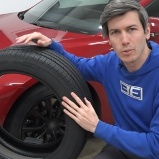 |
Fascinating: What's inside a Lucid Motors EV motor?
Take a really deep dive into electric vehicle motor design and manufacturing. Lucid Motors' CEO/CTO Peter Rawlinson and Powertrain VP Emad Dlala share how the company's "relentless focus on efficiency" led it to develop a 67-lb electric drive unit that can generate 670 hp for Lucid's high-end EVs. Learn about the company's innovative stator and rotor designs -- and so much more. It's a long video, but worth skipping through if you are short on time.
View the video. |
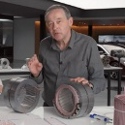 |
|
|